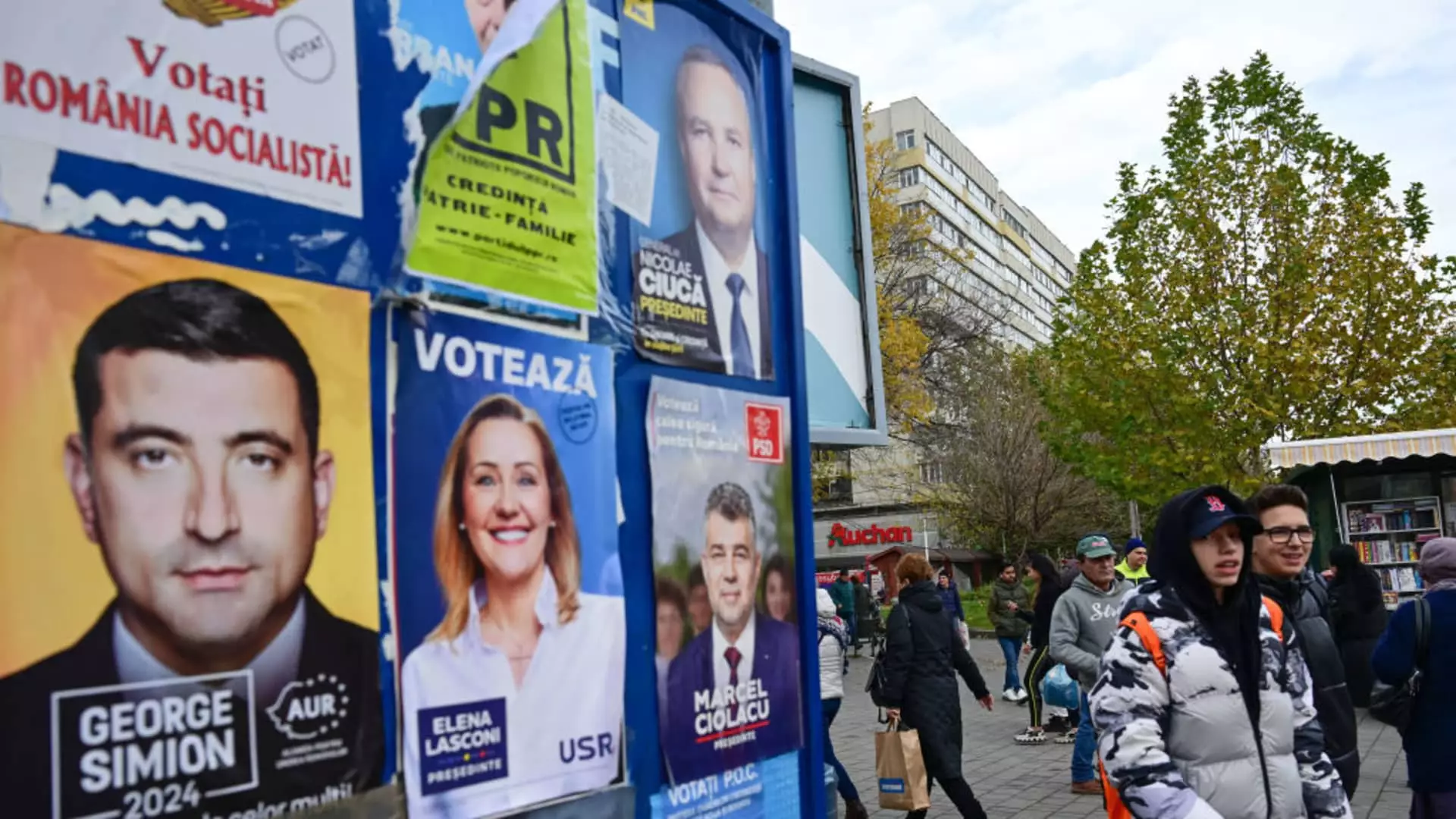The recent first round of Romania’s presidential election has yielded remarkable and unexpected results, shaking the political landscape of the nation. Independent candidate Calin Georgescu, representing far-right ideologies and pro-Russia sentiments, emerged as a leading contender, capturing 22.94% of the vote as per early Monday results. His ascent to the forefront of this electoral race was a significant deviation from pre-election forecasts, which largely anticipated a minimal performance from Georgescu. This outcome not only highlights voter volatility but also raises questions about the changing priorities and sentiments within the Romanian electorate.
Taking second place in the race was Elena Lasconi, the leader of the opposition center-right Union Save Romania (USR), who garnered 19.17% of the votes. This result positions her to face off against Georgescu in the impending runoff scheduled for December 8. Notably, Marcel Ciolacu, the incumbent Prime Minister and leader of the Social Democrat Party (PSD), narrowly missed the second position with 19.16% of the votes, marking a historic moment—this is the first time since 1989 that PSD will not have a candidate competing in the presidential runoff. The implications of this may signal a significant shift in the traditional power dynamics within Romanian politics.
The presence of far-right candidates in significant positions in the election—particularly Georgescu and George Simion of the Alliance for Uniting Romanians (AUR), who came in fourth with 13.87%—illustrates a notable surge in ultranationalist sentiment. This trend has broader implications for Romania’s political discourse, influencing national priorities and the public’s perception of foreign relations, particularly regarding military aid to Ukraine. Georgescu’s campaign, primarily propelled through social media platforms like TikTok, underscores a shift in campaign strategies that appeal to younger demographics increasingly engaged in political conversations online.
In stark contrast to Georgescu, Lasconi stands firmly on a pro-EU, pro-NATO platform, advocating for military support for Ukraine and pushing for necessary reforms aimed at combating corruption. She represents a faction of the electorate that seeks progress through alignment with Western ideologies, despite her opposition to full same-sex marriage rights—a position complex in its appeal to progressive voters. This juxtaposition of ideologies sets the stage for an intensely debated runoff, pitting ultranationalist and conservative values against modern liberalism.
With a voter turnout of 52.55%, engagement in this election reflects a populace eager to express their views amid ongoing geopolitical tensions and national concerns. The percentage of ballots processed indicates a determined electoral process and suggests that despite a divided landscape, many Romanians are compelled to participate in shaping the future of their governance. The upcoming runoff presents an opportunity for both candidates to address voter concerns and articulate their visions for Romania, as the nation stands at a pivotal crossroads between history and a potential reimagination of its national identity.
In essence, Romania’s 2023 presidential election results are a keen observation point for political analysts and voters alike, emphasizing the need for deeper understanding and continued engagement with the evolving political narrative.


Leave a Reply